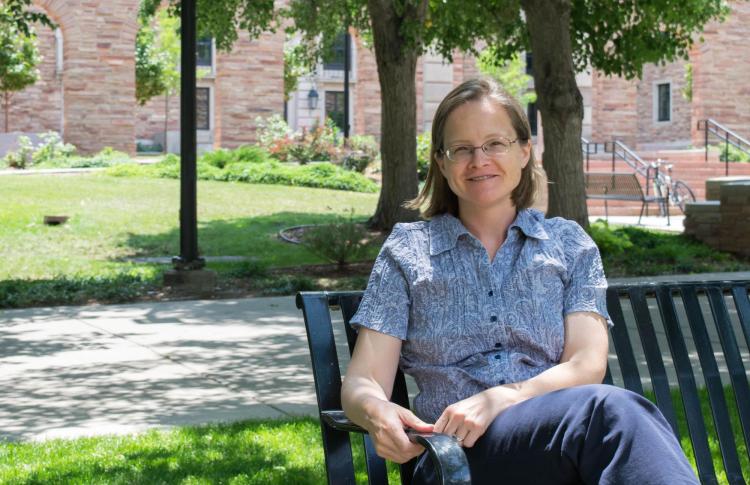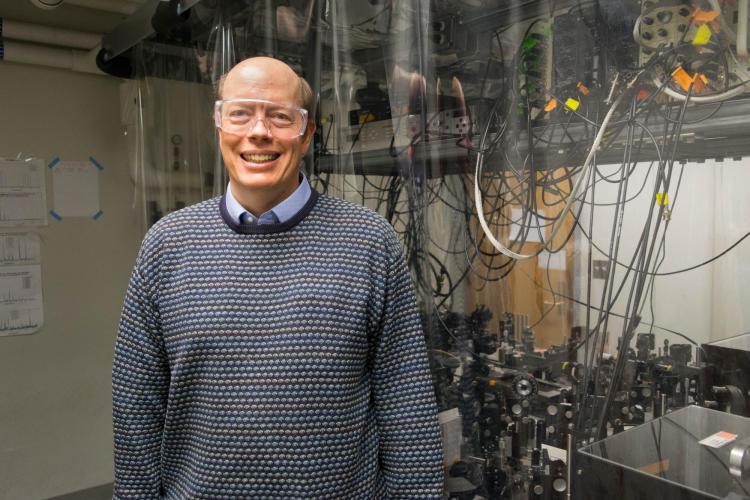Physics at CU Boulder recognized for excellence
The APS has recognized CU Boulder scientists and PhET Interactive Simulations as being among the 'most accomplished, promising and respected scientists and leaders'
Science, technology, engineering and math—or, STEM—education and the properties of light are at the forefront of the newest set of accolades for the University of Colorado Boulder.
The American Physical Society (APS), a nonprofit organization that dubs itself "the leading voice in physics," has awarded the team of PhET Interactive Simulations with the Excellence in Physics Education award, David Jonas, a professor in the Department of Chemistry and Biochemistry at CU Boulder, with the Earle K. Plyler Prize for Molecular Spectroscopy and Dynamics and Marissa Weichman and David Jacobson, both postdoctoral research associates at JILA, with the Justin Jankunas Doctoral Dissertation Award in Chemical Physics and the Award for Outstanding Doctoral Thesis Research in Biological Physics, respectively.
The awards are given out based on an extensive nomination process, and demonstrate the best of the best in any given field of physics research, the APS states.
"The award lets people know the experts think that this work is exciting and important," said Jonas.
PhET is a pioneering science and math educational resource that seeks to improve STEM literacy and accessibility across the globe through free, open-source educational software. Since its inception, it has been used more than 80 million times a year by students and teachers across the educational spectrum.

Kathy Perkins is the director of PhET Interactive Simulations and one of the recipients of the Excellence in Physics Education award. Photograph by Cay Leytham-Powell/University of Colorado.
"I can't think of any other science education innovation that really has that kind of breadth of use," said Robert C. Hilborn, the associate executive officer of the American Association of Physics Teachers, who led the nomination process. "It's really quite astounding."
PhET was created by Carl Wieman—a former physics professor at CU Boulder and one of five of its Nobel laureates from the university—when he saw the power physics simulations.
While PhET originally focused solely on physics simulations and education, today it addresses a global need to improve science and math education by creating more than 140 simulations in topics ranging from plate tectonics to calculus to natural selection.
"This award from APS is extra special to our team because PhET started in physics, with a vision and passion to make physics accessible and engaging for all students," said Kathy Perkins, one of the award recipients and the director of PhET Interactive Simulations. "We are truly honored to have our work recognized by the physics community."
Over the years, PhET's reach has expanded across disciplines and around the globe, and is now translated into 90 languages and used in more than 200 countries and territories.
"It's fantastic that it’s being used so widely," said Wieman. "It's way beyond I ever imagined."
While PhET Interactive Simulation's award was for its whole body of work, Jonas' prize in molecular spectroscopy instead recognized one specific contribution: his research demonstrating and developing femtosecond two-dimensional Fourier transform spectroscopy, and its application on how we study fast chemical processes.
Molecular spectroscopy, broadly, is the study of how molecules absorb light and react in both chemical and physical situations and is at the basis of many modern-day procedures, ranging from forensics to art conservation to food safety.

David Jonas, seen here in one of his labs, is the 2017 recipient of the Earle K. Plyler Prize for Molecular Spectroscopy and Dynamics. Photo by Cay Leytham-Powell/University of Colorado.
Jonas' work, though, looked at one area of this broad field—Fourier transform spectroscopy, or specifically the attempt to characterize the color spectrum of a light source—and added a new dimension to the existing research, opening doors to a wealth of new research on the properties of light.
"This award is for all of the things that this research set in motion," said Jonas.
The idea of the research came from looking at magnetic resonance and magnetic resonance imaging—better known as an MRI (which is used to diagnose concussions, breast cancer, arthritis and other ailments).
In an MRI, different parts of your body are mapped (via two connected magnetic radiofrequencies, which are basically a combination of very strong magnetic fields and radio waves) along two different spatial axes (or, two dimensions), which then are used to create a detailed picture of the inside of a body.
Instead of connecting radiofrequencies, though, Jonas’ research connected the frequencies of light along multiple dimensions and created maps that allow the molecules to tell you how their color changes during a chemical or physical reaction. These multi-dimensional maps, then, allow scientists to better track atoms and electrons within the molecules to the millionth of a billionth of a second.
Jonas still thinks there is a lot of work to go with this research, but also a lot of opportunity.
This work created a path that allowed scientists to further delve into the role that light plays in photovoltaics, or the conversion of light into electricity (as seen in solar panels), and natural reactions such as the splitting of water molecules (to hydrogen and oxygen) or photosynthesis in plants (or, how plants use light to make their food).
"There are a lot of exciting things going on in this area," commented Jonas.
But questions do remain—particularly on how to replicate these energy-transfer processes in nanomaterials.
In addition, two scientists now at CU Boulder's JILA were recognized by the APS for work at the beginning of their careers, rather than a culmination.
Weichman, who now works in Jun Ye's lab, won her dissertation award for work at the University of California, Berkeley in "Slow Photoelectron Velocity-Map Imaging and Infrared Photodissociation Spectroscopy of Cryo-Cooled Molecular and Cluster Ions."
Jacobson, who works in Tom Perkin's lab, won his dissertation award for pioneering work at the University of California, Santa Barbara in "electrostatic, elastic, and conformational behavior of single-stranded nucleic acids."
All winners received a cash prize and will be presenting at the annual APS meeting.
More information on PhET Interactive Simulations, David Jonas' research and the APS are available on their websites.

